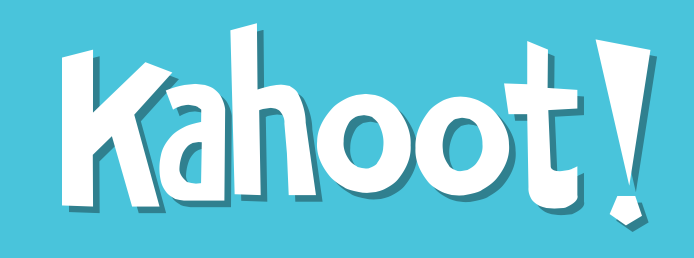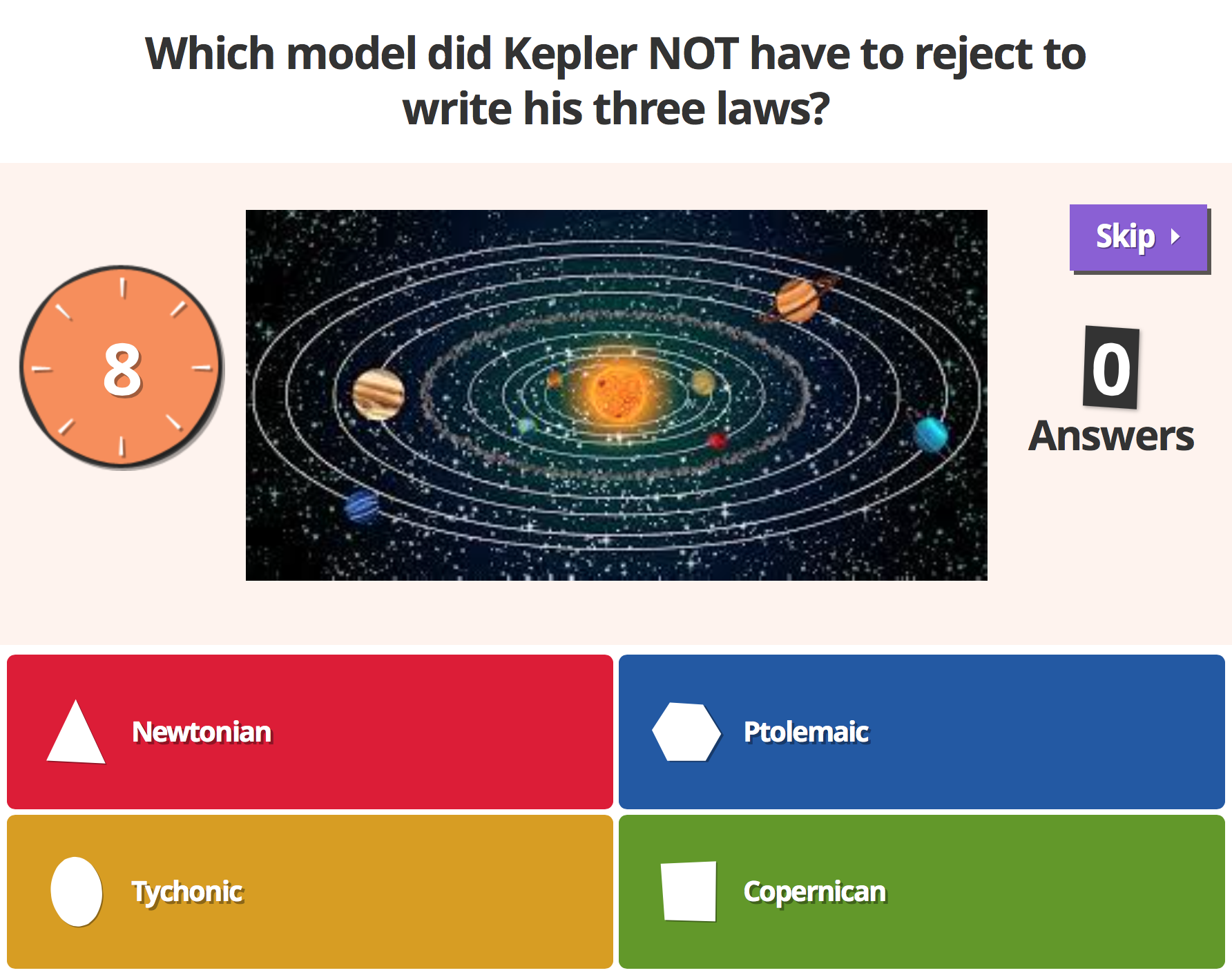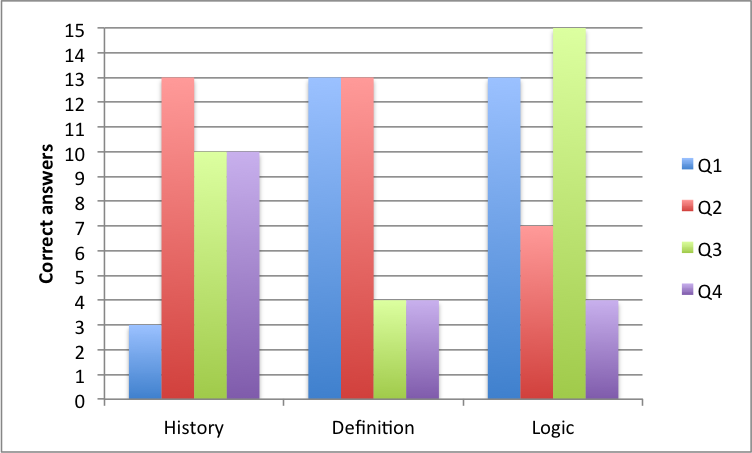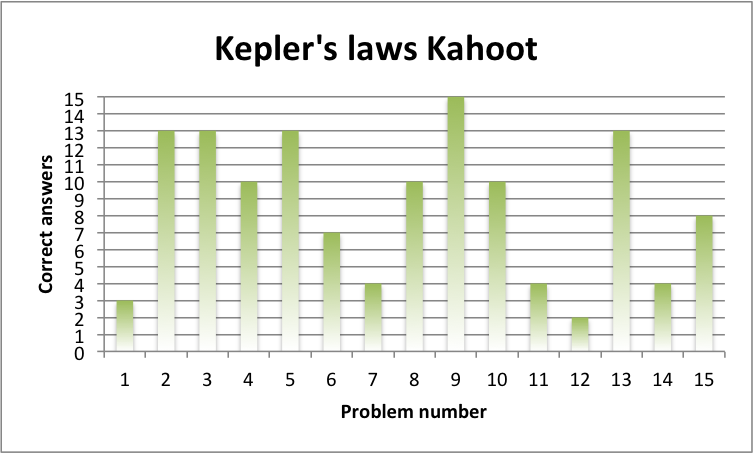How could the colorful, goofy game that kept Duke TIP middle schoolers from rioting also be a useful tool in the undergraduate classroom? Beneath the asymmetrical font is immediate feedback to both students and teachers and detailed downloadable data for each quiz, each time you play it.
 A lot of instructors talk about gamifying their classes to make them more engaging, but true gamification is time-intensive and subject to the high expectations of students who probably play elaborate games for fun. Kahoot! bills itself as a “game-based digital learning platform,” but all students see is game. With minimal instructor investment (similar to a standard quiz), students can enter a game PIN displayed on a common screen into their personal mobile devices and select multiple choice answers as the class plays the game together.
A lot of instructors talk about gamifying their classes to make them more engaging, but true gamification is time-intensive and subject to the high expectations of students who probably play elaborate games for fun. Kahoot! bills itself as a “game-based digital learning platform,” but all students see is game. With minimal instructor investment (similar to a standard quiz), students can enter a game PIN displayed on a common screen into their personal mobile devices and select multiple choice answers as the class plays the game together.
This summer, I used a 15 question Kahoot! to gauge learning about Kepler’s laws. It helped me see the effectiveness of class activities like drawing an ellipse with string and a film about the historical context of Kepler’s contribution to celestial mechanics.

Because students and their instructor see immediate feedback between questions, this is a powerful tool for formative assessment; students hardly notice they are evaluating their own knowledge and being evaluated. Players earn more points for quick answers, and they see how they rank between each question. Since they choose “nicknames,” this is an opportunity for them to test their learning with low stakes, but potential reward (the winning TIPster received a custom aerospace pin).
When I was short on time, the students did an impressive job generating their own questions for the next day’s game, both in groups and individually. I could tell by their questions about which distractors they should use that they were deepening their understanding of the topic.
In addition to the immediate information the game offers, the instructor can download a spreadsheet of results from each game. Correct and incorrect answers are already color-coded for a quick visual, and investing a few more minutes can yield even more information. From a plot using numbers from a one-line formula, I deduced that question 12 was perhaps poorly worded, and by question 9, that everyone understands the qualitative relationship between the year of a planet and the semi-major axis of its orbit.
But I also wanted to see how effective classroom activities and the historical movie were, and whether the young rocket scientists were ready to make logical deductions using their knowledge. After a few minutes classifying the questions into types, I made another quick plot to see how the types differed in learning outcomes.
In general, I judged that the movie and accompanying worksheet had provided good context. The students had clearly learned what an ellipse was–but needed more time with the concept of eccentricity. The logical questions we had focused on with a physical activity (running around outside, while tethered to orbits) had high correct response rates, but not so the new abstract ideas. I was able to use this information to tailor later lessons to the learning styles of this group.

While I found Kahoot! to be largely successful, one notable limitation is that each player must have access to a mobile device. I was able to check out iPads for several students who didn’t bring smartphones to class, but not everyone may have this option. The questions are also limited to multiple choice answers, and the maximum time the instructor can allow is two minutes, precluding more intensive calculations. There is also the consideration of age-appropriateness. I enjoyed playing geographic quiz games with the students over break, but more jaded, less willing students might be harder to convince that a game with this visual design is for them.
Ultimately, I found the community atmosphere of the game and the option for discussion between each question to be a real boon to the aerospace engineering students. They were able to provide themselves and me crucial information about their learning, using creative nicknames that allowed anonymity for those who wished. They developed deeper understanding by writing their own questions, and they had a lot of fun claiming ownership of the result.



Thanks for the great article !
Is it ok to share the infografics on my blog and my facebook ?
Best of luck,
Aspiratoare
Certainly. Please provide a link to this blog!
Such a wonderful post about laws of Kepler!! Thanks for this informative post Genevieve!!
Regards
Mahesh
This is really a wonderful article. Get to know so much about ‘Kahoot!’ and the amazing initiate it has taken to present learning in an interesting way in summer vacations. Thanks for sharing the writing
Very informative! I used to research into our interactive whiteboard software and then compiled the corresponding user guides. It was really time-consuming. You must have spent a lot of time on it. Thank you very much for sharing!
I actually tried to emphasize that the plots of student grades were really quick to make! If you download a spreadsheet of results, a quick =COUNTIF() calculation can tell you how many students got each question right.
So interestin thing! Thank you so much for this info!